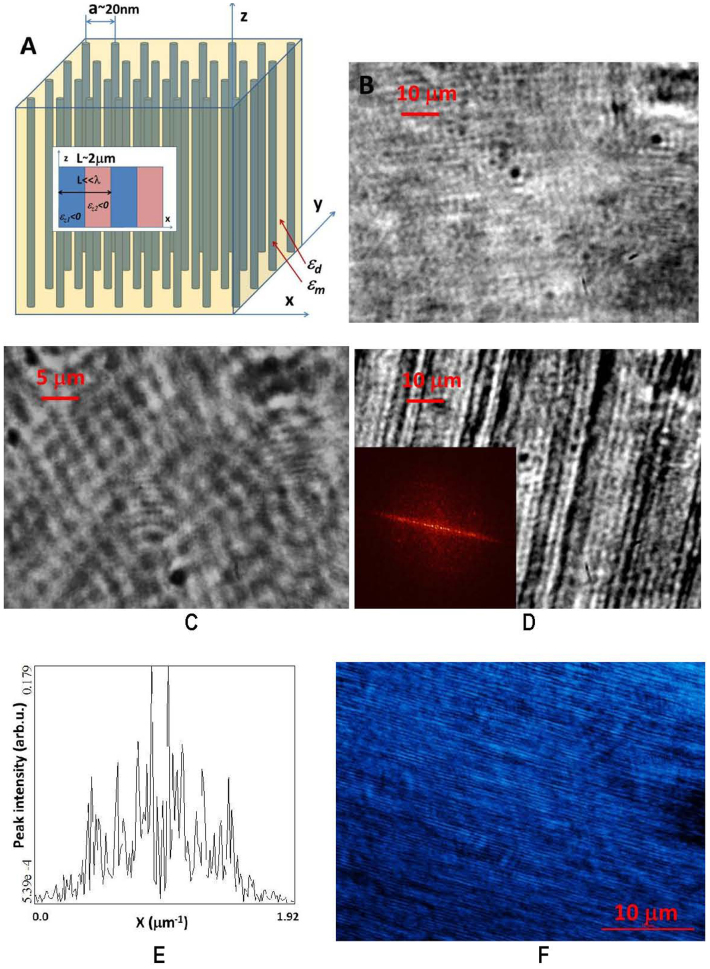Figure 1.
(A) Experimental geometry of the ferrofluid-based hyperbolic metamaterial. The array of self-assembled cobalt nanocolumns has typical separation a ~ 20 nm between the nanocolumns. The inset shows a photonic hyper-crystal structure formed by periodic arrangement of cobalt rich and cobalt sparse regions with typical periodicity L ~ 2 μm, so that periodic modulation of hyperbolic metamaterial properties on a scale L ≪ λ is achieved in the LWIR spectral range where λ ~ 10 μm. Since photon wave vector in hyperbolic metamaterials is not diffraction-limited, periodic modulation of hyperbolic metamaterial properties on a scale L ≪ λ would lead to Bragg scattering and formation of band structure. (B–F) Microscopic images of cobalt nanoparticle-based ferrofluid reveal subwavelength modulation of its spatial properties: frames (B) and (D) show microscopic images of the diluted cobalt nanoparticle-based ferrofluid before and after application of external magnetic field. The pattern of self-assembled stripes visible in image D is due to phase separation of the ferrofluid into cobalt reach and cobalt poor phases. The stripes are oriented along the direction of magnetic field. The inset shows Fourier transform image of frame D. Its cross section presented in panel E shows a histogram of different periods present in the image. A movie taken during this experiment when the external magnetic field was turned on and off is available in the supporting on-line material. A microscopic image of the sample taken along the axes of the nanowires is shown in frame C. Panel F demonstrates that the original undiluted ferrofluid exhibits similar phase separation in external magnetic field, even though on much smaller scale.

